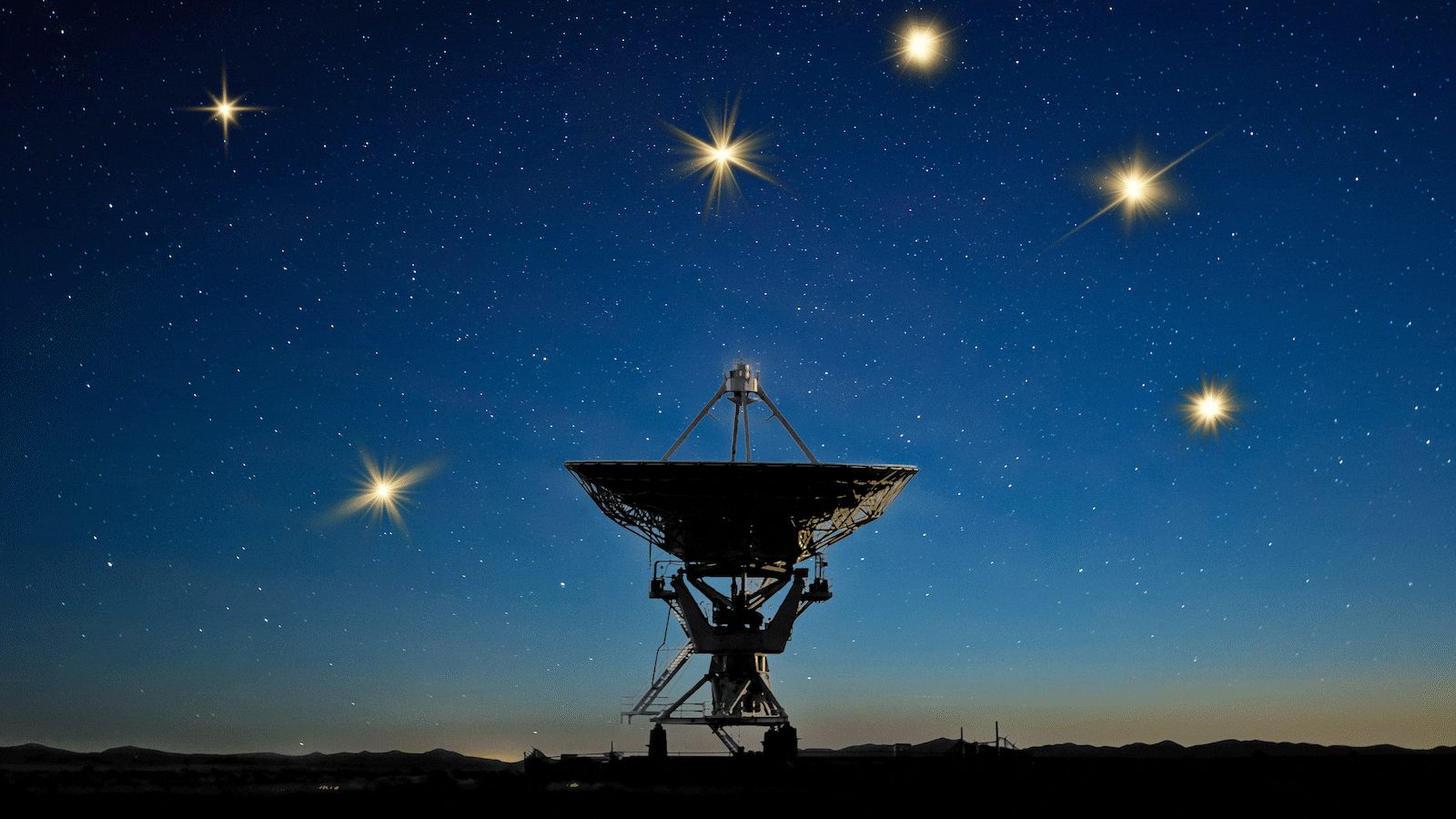Scientists are widening their search for alien civilizations. They might not find actual extraterrestrial life, but that doesn’t mean they won’t find something profound.
For 60 years, experts in the field of SETI—the search for extraterrestrial intelligence —have spent most of their time and energy fine-tuning giant radio receivers and listening for alien signals—basically, stray broadcasts from current or extinct societies on faraway planets.
But there are other ways to search for E.T. besides the radio. Other beings might have learned to use lights to talk to each other—and, indirectly, to us. “It's hard to predict what another civilization might be doing,” Dan Werthimer, a Berkeley astronomer, told The Daily Beast. There’s a burgeoning movement in SETI to start looking for the telltale flashes you might expect from a high-tech society. Think lighthouses, but much, much bigger.
On the surface, an optical SETI system might seem like more trouble than it’s worth. Bright stars are constantly shimmering and twinkling, but even big planets, moons and asteroids can reflect a ton of light. The most problematic sources of light for SETI come from so-called Cherenkov radiation, which are fast flickers resulting from charged particles moving quickly through Earth’s atmosphere and creating visible shock waves.
How do you tell Cherenkov radiation waves from a far-away alien signal? “These flashes are common enough to make false alarms a big problem for optical SETI scientists,” Wade Roush, a science lecturer and author of Extraterrestrials, told The Daily Beast.
That’s the problem being investigated by a joint American-Chinese team, of which Werthimer is a member. In a paper not yet peer-reviewed that was posted online in late November, the team described a new experiment it calls Panoramic SETI, or PanoSETI. It’s a proposal to use two assemblies of 45 telescopes each spread out across a wide area, and point them all toward the same broad swath of sky. Each telescope acts as a sort of check on all the others. Using two arrays to look at the same flicker from different points of view lets scientists triangulate the source.
If the source seems close, it’s probably Cherenkov radiation. If it’s really, really far away, it just might be aliens. After all, “pretty much nothing makes nanosecond flashes of light, which is what a signaling civilization might send,” Paul Horowitz, a Harvard physicist on the team, told The Daily Beast.
This light-based survey was a long time coming. “SETI has mostly been a radio exercise since 1960,” Seth Shostak, an astronomer with the California-based SETI Institute, told The Daily Beast. But that’s only because radio technology is old and inexpensive. Astronomers could easily afford the receivers needed to scan the cosmos for alien broadcasts.
Charles Townes, the late Nobel laureate who invented the laser, theorized aliens might try communicating by way of lasers and proposed building visual SETI surveys as early as 1961. Find faraway laser flashes, he argued, and you might also find extraterrestrials.
The technology to detect distant laser light didn’t exist in 1961. With the development of better sensors in the 1990s, optical SETI finally went mainstream. But early search efforts, each inspecting just a small piece of sky for a brief span of time, were quite narrow. And space happens to be a pretty big place.
Hence the reason PanoSETI is getting so much attention—it could help us look at up to 18 percent of the sky. “Panoramic SETI represents the next step in the evolution of this strategy,” Douglas Vakoch, who heads the METI International research organization in San Francisco, told The Daily Beast.
It helps that good technology is easier than ever to afford. Optical detectors, including tiny, simple “solid-state photomultipliers” that can detect very weak light, have gotten a lot cheaper in recent years. Werthimer said the cost of these sensors, per pixel, has quickly dropped from $1,000 to just $5. Attach the photomultipliers to a bunch of flat, stacked lenses called “Fresnel lenses” (cheaper than lenses made of one piece of glass), and you can make a lot of super-sensitive telescopes for not a lot of money.
“Solid-state photomultipliers make it doable,” Horowitz said. “A lot of computing power and fancy integrated circuits are also necessary, and Fresnel lenses—an old technology, actually—make it far less expensive than an array of glass telescopes. The combo makes it a great and affordable search method.”
To be clear, registering a flickering light and confirming that it’s not Cherenkov radiation doesn’t prove that aliens exist. A few months ago, NASA chief scientist Jim Green published a paper warning other scientists not to jump the gun and announce they’ve found extraterrestrial life based on thin evidence. “Our generation could realistically be the one to discover evidence of life beyond Earth,” Green wrote. “With this privileged potential comes responsibility.”
Still, catching these quick flashes and separating them from natural radiation could represent one data point in a wider, long-term search for proof of alien life.
In Roush’s view, the expansion of our SETI toolkit is the only way we’re going to ever find signs of life elsewhere. “I have a hard time imagining that we're alone in the galaxy,” Roush mused. “It's far more likely, to my mind, that we just haven't figured out how to eavesdrop on the galactic conversation. That means we should be doing everything we can to expand the breadth of the search.”
In one sense, our search methods are bound by our own experiences on Earth and, by extension, our imaginations. If we can’t even imagine a particular method of communicating because we’ve never tried it, we sure can’t go looking for it in outer space. “Two hundred years ago we would have been looking for smoke signals,” Horowitz said.
It’s easy to envision skeptics opposed to adding even more elements to SETI efforts. But consider benefits outside of discovering aliens: The same technology that might catch possible signals from alien civilizations could also register other hard-to-detect astronomical phenomena, Werthimer pointed out. “Perhaps an evaporating primordial black hole,” he said.
These hypothetical fading black holes, which formed in the seconds following the Big Bang, could be some of the oldest objects in the universe. They might hold deep secrets about the origins of, well, everything. We’ll only know if and when we find them.
In that sense, a bunch of cheap telescopes, staring unblinkingly into the night sky looking for the distant lights of faraway civilizations, might help us rewrite the history of the universe… even if they don’t ever detect E.T.







